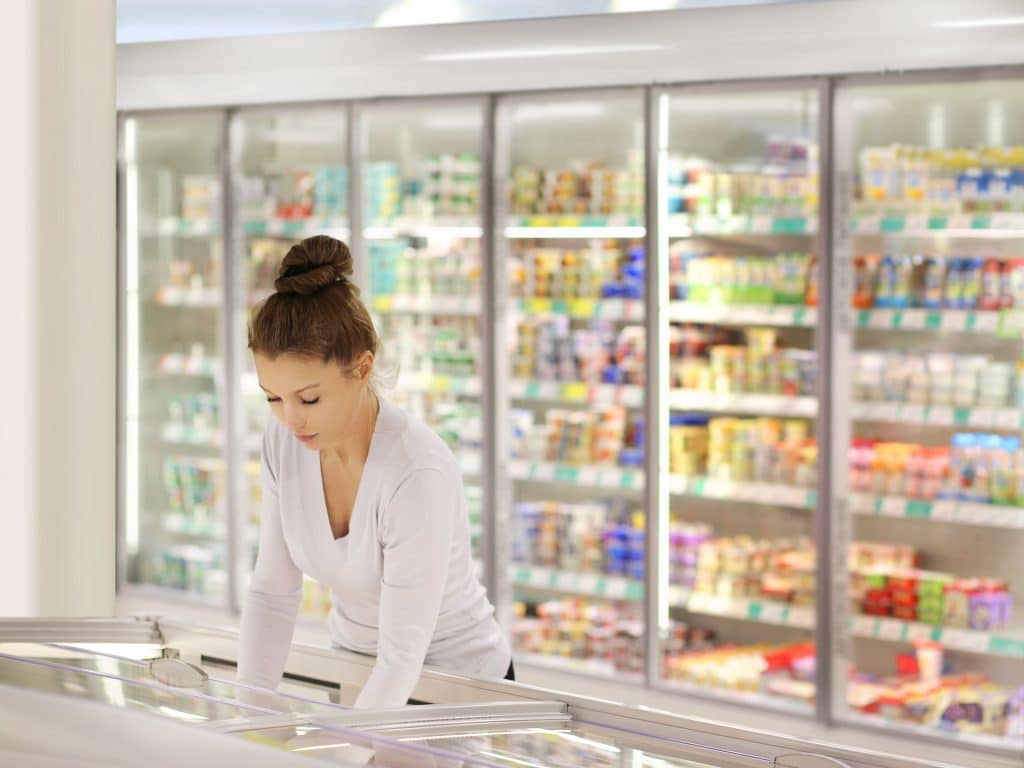
Article 2 of Royal Decree 1055/2022, on packaging and packaging waste defines packaging as ‘any product manufactured with materials of any nature and used to contain, protect, manipulate, distribute and present goods, from raw materials to finished articles, at any stage of the manufacturing, distribution and consumption chain’.
Importance of packaging food products.
The food packaging They are those that protect food and make it possible for these products to reach our home. preserving its sensory and nutritional properties and without putting food safety at risk.
In recent years, the food packaging sector has also faced a new challenge: to continue fulfilling its function, but in a more sustainable way and generating less waste.
Functions and benefits of the packaging
Food packaging fulfills several functions:
- Protection. It allows the food to reach us in its entirety, without the juices spilling out, drying out, essentially being damaged or its organoleptic qualities being altered. It could be for a prepared dish, the raspberry tub, the soda bottle, the mayonnaise jar…
- Food safety. They isolate dirt and microorganisms that could alter it or cause food poisoning.
- Information. The packaging is the support for the labeling with nutritional information. They provided data on the nutritional composition, ingredients, expiration or best-before date, origin, how to prepare it…
- Durability. The packaging is also in the air and in contact with microorganisms, insects or other animals that could degrade or alter the food. Many packaging incorporates conservation systems that extend the shelf life of the product, such as a protective atmosphere and the addition of additives to the packaging to extend the shelf life of the product.
- visual enhancement. The packaging fulfills a marketing function and makes the food appealing, either because it has an attractive design, or because it seems easier to consume. This is what happens with bags of lettuce mix.
- Differentiation. In this way, each brand provides its identity signals at the point of sale. It is what makes us distinguish one manufacturer’s tomato can from another’s.

Requirements for manufacturing food packaging.
Due to their importance for the food safety of citizens, packaging is regulated in various regulations that specify essential concepts, such as with what materials packaging intended to be in direct contact with food can be manufactured, the packaging conditions, whether they should be carried . recycled material and in what quantity…
One of the fundamental regulations is the Regulation 1935/2004which determines that only those are authorized Manufactured with materials that ensure that, if there is any possible transfer of chemical substances to food, it does not pose safety problems.nor modify the composition of the food in an unacceptable way, nor have adverse effects on its quality (for example, on its taste or smell).
The Regulation lists 17 groups of materials and objects that may, in turn, have specific rules regulating their use. This is the case of plastics, recycled plastic materials, active and intelligent materials, ceramics and regenerated cellulose films.
Types of food packaging according to material
Clara Vilasecafood technologist and CSR manager at ALDI Spain, explains the advantages and conditions of the most common packaging in food points of sale.
Plastic packaging
Not all plastic containers are made from the same material. There are PET bottles, the polypropylene in trays of chicken breasts or grated tomato to spread in the pan… “Plastic is usually lighter than glass. In addition, there are already food packaging made from recycled material,” he explains.
The European Commission is finalizing the approval of a new regulation (the Packaging and Packaging Waste Regulation-PPWR) that will progressively increase the percentage of recycled plastic present in food packaging.
Plastic containers are suitable for almost any type of food, from fresh products to prepared dishes or deep-frozen foods.
Glass containers
“Glass is 100% recyclable and guarantees the safety of the product,” says Vilaseca. In its favor, it allows you to view the product. On the other hand, it is the heaviest and most fragile material.
It is common for preserved vegetables, jams, pickles… And, of course, for drinks, especially in the restaurant sector.
cardboard packaging
This material is not always the best option to be in direct contact with food, but due to its versatility, ease of stacking and light weight, it is common for manufacturing boxes and packaging. They usually have a plastic bag or box inside to protect and insulate the food, although there are already commercial proposals for 100% cardboard packaging. “It is common in packaging for cereals, infusions, frozen foods…” adds Vilaseca.
More and more companies are using certified cardboard boxes or sheets from renewable forests, or with more than 70% recycled material.
Aluminum, steel and tin.
It is the option chosen to manufacture cans of beverages and preserves. “The product is well protected and the materials are continuously recyclable,” says Vilaseca.
wooden containers
We find them in strawberry boxes, wine boxes and some premium cases for nougat and other foods. Oddly enough, they can be recycled and should be placed in the yellow bins.

Do you know how to distinguish between biodegradable and compostable packaging?
There is usually some confusion with these two concepts. In the face of sustainability in a circular economy, it is important to know how to identify them and, above all, know where to deposit them after use.
- Compostable packaging. They are made from materials that are susceptible to decomposition thanks to the action of microorganisms that transform them into fertilizer or compost. This can be done in a home composter or by depositing them in the brown organic waste container. By regulation, the bags in self-service bakeries and fruit stores are compostable.
- Biodegradable packaging. They disappear naturally due to the action of light, water or air. They are still rare and expensive. They are made, for example, with cocoa shell. Although they can degrade in the environment, this process is not instantaneous, so they become waste if they are thrown anywhere. That is why it is recommended to deposit them in the brown container.
Single-use and reusable containers.
Both the European Union and Spain are working on the possibility of increasing, in the medium long term, the percentage of food packaging that can be reusable or refillable in the establishment itself or in others. One possibility, which already works for drinks in countries like Germany or the Netherlands, is to increase the sale of products in reusable containers that are returned once empty. The consumer pays a kind of ‘deposit’ when purchasing, which is returned when he deposits the empty containers.
Another option that is already being worked on is the implementation of ‘refill’ systems. There are already pilot projects in some European supermarkets to refill soft drink bottles.
It is important to keep in mind that not all packaging is the same and not all of them allow reuse with complete safety. Likewise, not all of them will withstand several cycles of use equally well without deteriorating. For example, we can reuse the cookie tin (aluminum or tin) or the breakfast cocoa jar (normally made of plastic, such as polypropylene) to store other foods at home. On the other hand, it is not recommended to reuse water bottles, since the material (PET plastic) deteriorates.

How to recycle packaging
Royal Decree 1055/2022 will require, as of January 2025, the logos or symbols of the recycling containers where the containers must be deposited to be indicated on the packaging. It can be one or more (for example, the cap in the yellow packaging and the glass jar in the green container). It is a measure that seeks to guide citizens to know where they should deposit each container to provide a circularity solution.
Let’s see some examples of how and where we should deposit some of the most common food containers in our pantry.
- Peelable packaging. They consist of a tub sealed with a film on the top. This way it is isolated from the outside, but opens easily. The containers of sliced ham, yogurts are peelable… That film goes in the yellow container. The rest of the packaging, if it is plastic, turns yellow; if it is glass (like instant coffee), green.
- Glass bottles with stopper. The bottle should be placed in the green glass container and the cap, whether plastic or metal, in the yellow one. A common example is premium extra virgin olive oil.
- tetrabrik. These containers contain plastic, paper and aluminum. They must be deposited in the yellow bin and the recycling plant is responsible for separating them for separate recycling.
- Citrus mesh. If they are plastic, to the yellow container. There are also meshes made of compostable materials, such as cellulose or biopolymers. In this case, they must be placed in the brown organic waste container.
- Sleeve. It is that kind of camisole that products sometimes wear, coinciding with a campaign or some special action. Once we remove it, we see the usual packaging. This ‘camisole’ or ‘sleeve’ is made of plastic and must be placed in the yellow container.
Packaging with IML label. It’s that tub of fresh guacamole where we can’t remove the label because it’s printed on the container itself. “The label is usually made from the same type of plastic as the rest of the packaging, so everything goes in the yellow bin.”
The ALDI Council
Whatever the food packaging, do not forget to place it in the relevant container to recycle it: blue, cardboard; to green, the glass ones; to yellow, plastic ones and to brown, bamboo trays and other compostable materials.
Clara Vilaseca. She has a degree in Food Science and Technology with a Postgraduate Degree in Management Development in Sustainable Business and finishing an MBA. After working as a quality technician in a community catering service, she joined ALDI, where she has been for more than 8 years. First as a specialist in the Quality area and for almost 2 years as head of CSR.







